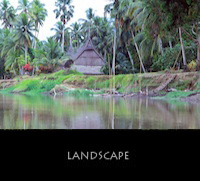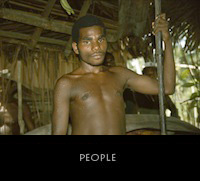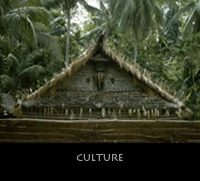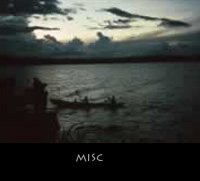Fieldphotos - Sepik
Sepik
One of the largest ethnic groups in the Sepik region are the Iatmul people who live on the middle reaches of the Sepik River. They are a fine and proud people living in
big villages with a population of between two hundred and a thousand individuals in each village. Their social organisation, kinship and religious systems are very complex.
There is a division into two totemic moieties, which are further subdivided into clans. In the pre-colonial time the Iatmul were notorious head-hunters. Centre of the men's
activities and ceremonial life is the 'Haus Tambaran' or men's ceremonial house. One of the most important ceremonies is the initiation of young boys into manhood in
the course of which the novices are passing through the painful process of scarification. The scars symbolize the skin of the mythic crocodile. At the end of initiation the
boys heavily decked with body ornaments are exhibited to the women as heroes of the occasion.
The Iatmul people are among the most prolific and accomplished of the region's woodcarvers.
The primary focus of artistic expression is the men's ceremonial house.
The gigantic king posts
are usually decorated with carved ancestral spirit faces and figures often in combination with totemic animals. Below the towering gables there are
big woven or wooden carved masks and thegable top is crowned by an ancestral figure which is surmounted by a mythical eagle. Inside the ceremonial house sacred
carvings such as debating stools, masks, ancestral figures, skull racks with overmodelled skulls, fighting shields, sacred flutes and other paraphernalia are stored away
from the eyes of women and children. A particular feature of Iatmul art are the big slit gongs with elaborately carved ends. Even in ordinary houses there are a lot of finely
decorated objects, such as wooden carved suspension hooks, neckrests, sago storage jars, cooking pots and eating bowls as well as fire hearths and frying pans.
A centre of pottery making is the village of Aibom on the edge of the Chambri Lakes. Also dugout canoes have a finely carved crocodile head at the front. Sepik artists
have been creating works of art from almost every natural material - wood, clay, shells, leaves, animal teeth, feathers, etc.



